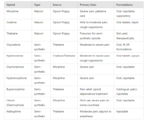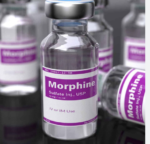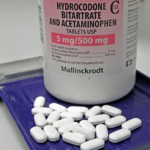Hydrocodone abuse is a significant public health issue due to the drug’s addictive potential and its widespread use as a prescription pain reliever. Hydrocodone is an opioid analgesic, often prescribed to treat moderate to severe pain or as a cough suppressant in some cases. While effective for these medical purposes, hydrocodone’s ability to induce feelings of euphoria and relaxation makes it prone to misuse and addiction.
Hydrocodone is commonly found in combination with acetaminophen (as in Vicodin or Norco), ibuprofen, or other medications to enhance its pain-relieving effects. Abuse occurs when individuals use the drug in ways other than prescribed—whether by taking larger doses, using it for recreational purposes, or obtaining it without a prescription.
What is Hydrocodone Abuse?
Hydrocodone abuse refers to the misuse of the medication, where it is taken inappropriately for non-medical reasons, often to achieve a euphoric high. Abuse can also involve taking higher doses than prescribed, taking the drug more frequently, or altering its form for faster effects (e.g., crushing pills to snort or inject).
Forms of Hydrocodone Abuse Include:
- Taking more than the prescribed dose to enhance its effects.
- Using hydrocodone recreationally for its euphoric and calming effects.
- Using someone else’s prescription or obtaining it illegally.
- Combining it with other substances, such as alcohol, to amplify its effects.
- Snorting or injecting hydrocodone after crushing the pills, which increases the risk of overdose.
Why is Hydrocodone Abused?
Hydrocodone abuse occurs for several reasons, primarily due to its psychoactive effects. When taken in higher doses, hydrocodone can induce a sense of euphoria, relaxation, and well-being, which is appealing to those seeking a recreational high. The drug’s sedative effects may also be attractive to people trying to self-medicate for anxiety, stress, or other emotional problems.
Factors Contributing to Hydrocodone Abuse:
- Widespread Availability: Hydrocodone is one of the most frequently prescribed opioids, making it more accessible.
- Perceived Safety: Since it’s a prescription drug, some people believe it is safer than illicit drugs, even when used non-medically.
- Euphoric Effects: The drug’s ability to create feelings of pleasure and relaxation leads to its recreational use.
- Tolerance and Dependence: Over time, people who are prescribed hydrocodone may develop a tolerance, requiring higher doses to achieve the same effect. This can lead to misuse and eventual abuse.
- Mental Health Issues: Individuals suffering from anxiety, depression, or trauma may misuse hydrocodone to escape emotional distress.
Effects of Hydrocodone Abuse
Hydrocodone, like other opioids, affects the brain’s opioid receptors, which are responsible for controlling pain, mood, and reward systems. When abused, hydrocodone can lead to a range of physical, mental, and emotional effects.
Short-Term Effects:
- Euphoria
- Drowsiness
- Sedation
- Reduced anxiety
- Constipation
- Impaired cognitive function
- Slowed breathing
- Nausea and vomiting
Long-Term Effects:
- Tolerance: Over time, the body becomes accustomed to hydrocodone, requiring higher doses to achieve the same effect.
- Dependence: The brain and body become reliant on the drug to function normally, leading to withdrawal symptoms if the drug is stopped.
- Addiction: Hydrocodone abuse can escalate into addiction, characterized by compulsive drug-seeking behavior despite negative consequences.
- Respiratory Depression: High doses can slow breathing to dangerous levels, which can be fatal in cases of overdose.
- Liver Damage: Hydrocodone is often combined with acetaminophen, and chronic abuse of this combination can lead to severe liver damage or failure.
Consequences of Hydrocodone Abuse
The abuse of hydrocodone can have devastating personal, social, and legal consequences. Long-term abuse can lead to severe health risks, including overdose, which is a major concern due to the drug’s respiratory depressant effects.
Health Risks:
- Overdose: An opioid overdose occurs when the drug overwhelms the brain’s ability to regulate breathing, leading to respiratory depression, coma, or death.
- Physical Dependence: Regular abuse leads to physical dependence, where the body adapts to the drug and requires it to function.
- Withdrawal Symptoms: When hydrocodone is discontinued, individuals can experience withdrawal symptoms, such as muscle pain, sweating, agitation, anxiety, nausea, vomiting, and insomnia.
- Liver Damage: Hydrocodone is often combined with acetaminophen, and excessive intake can result in liver damage or acute liver failure.
- Mental Health Issues: Long-term abuse can worsen mental health conditions, including depression and anxiety, and may increase the risk of suicidal thoughts.
Social and Legal Consequences:
- Legal Trouble: Illegally obtaining or using hydrocodone without a prescription can lead to criminal charges.
- Relationship Strain: Addiction often causes social withdrawal, strained relationships with family and friends, and loss of trust.
- Financial Issues: The cost of obtaining hydrocodone, either legally or illegally, can lead to financial problems, especially if addiction leads to job loss or other work-related issues.
- Reduced Quality of Life: Addiction can significantly lower a person’s quality of life, interfering with work, social responsibilities, and overall well-being.
How to Treat Hydrocodone Abuse ?
Treating hydrocodone abuse requires a comprehensive, multi-faceted approach that addresses both the physical dependence and psychological factors contributing to the addiction. Treatment typically involves detoxification, medication-assisted therapy (MAT), behavioral therapies, and ongoing support to ensure long-term recovery. Here’s a detailed breakdown of the methods used to treat hydrocodone abuse:
1. Medical Detoxification
Detox is the process of removing hydrocodone from the body and managing withdrawal symptoms in a safe, controlled environment. This is often the first step in treating hydrocodone addiction and is best done under medical supervision to ensure the patient’s safety.
Steps in Medical Detox:
- Evaluation: Medical professionals assess the individual’s health, history of drug use, and any co-occurring conditions (e.g., mental health disorders).
- Stabilization: Hydrocodone is gradually tapered off to reduce withdrawal symptoms, or medications are used to manage them.
- Managing Withdrawal Symptoms: Withdrawal from hydrocodone can be uncomfortable and includes symptoms like muscle aches, anxiety, insomnia, nausea, and diarrhea. Medical professionals may prescribe medications to ease these symptoms.
Medications Used During Detox:
- Buprenorphine (Subutex, Suboxone): A partial opioid agonist that helps reduce cravings and withdrawal symptoms without producing a high.
- Methadone: A long-acting opioid used to taper off hydrocodone in a controlled manner, reducing cravings and withdrawal symptoms.
- Clonidine: A non-opioid medication that helps alleviate certain withdrawal symptoms, such as anxiety, sweating, and restlessness.
2. Medication-Assisted Treatment (MAT)
After detox, MAT can help individuals manage cravings and reduce the risk of relapse. MAT involves the use of medications in combination with behavioral therapy to support recovery.
Common Medications in MAT:
- Buprenorphine (Subutex, Suboxone): Helps reduce opioid cravings and withdrawal symptoms without the same high as hydrocodone.
- Methadone: Used in some cases for long-term maintenance therapy, reducing cravings and withdrawal symptoms.
- Naltrexone: An opioid antagonist that blocks the effects of opioids, preventing the individual from experiencing a high if they relapse. It is often used to maintain sobriety after detox.
- Naloxone: Often combined with buprenorphine in Suboxone, naloxone helps prevent misuse of the medication by blocking opioid effects if the drug is taken improperly (e.g., crushed or injected).
Benefits of MAT:
- Reduces cravings and withdrawal symptoms.
- Helps stabilize individuals during recovery.
- Reduces the risk of overdose and relapse.
- Allows individuals to participate in therapy and daily life without being overwhelmed by withdrawal.
3. Behavioral Therapies and Counseling
Therapy plays a critical role in treating hydrocodone abuse by helping individuals address the psychological and behavioral aspects of addiction. Behavioral therapies aim to identify triggers, change unhealthy thought patterns, and develop coping mechanisms.
Types of Behavioral Therapies:
- Cognitive Behavioral Therapy (CBT):
- Focuses on identifying negative thought patterns and behaviors that contribute to drug use.
- Teaches coping strategies to deal with stress, cravings, and triggers without using drugs.
- Contingency Management (CM):
- A reward-based system where individuals receive incentives (e.g., vouchers or small rewards) for meeting treatment goals such as attending therapy or remaining drug-free.
- Encourages positive behaviors and adherence to the recovery plan.
- Motivational Interviewing (MI):
- A non-confrontational therapy approach that helps individuals resolve ambivalence about quitting hydrocodone and strengthens their motivation to change.
- Builds confidence and commitment to recovery.
- Group Therapy:
- Offers peer support, allowing individuals to share experiences and challenges with others who are also in recovery.
- Provides accountability and emotional support, fostering a sense of community.
- Family Therapy:
- Addiction often strains family relationships. Family therapy helps rebuild trust, improve communication, and involve loved ones in the recovery process.
- Educates family members on addiction and how to provide effective support.
4. Inpatient and Outpatient Rehabilitation
Rehabilitation programs provide a structured environment where individuals can focus on recovery. The choice between inpatient (residential) and outpatient rehab depends on the severity of the addiction and the individual’s needs.
Inpatient Rehabilitation (Residential Rehab):
- Individuals stay in a facility for a period (usually 30, 60, or 90 days), receiving round-the-clock care and support.
- Provides a highly structured environment free from distractions and triggers.
- Ideal for those with severe addiction or co-occurring mental health disorders.
- Includes individual therapy, group sessions, and recreational activities to promote healing and recovery.
Outpatient Rehabilitation:
- Allows individuals to live at home while attending therapy sessions during the day or evening.
- Suitable for those with milder addiction or those transitioning from inpatient care.
- Provides flexibility for individuals to maintain work, school, or family responsibilities while still receiving treatment.
- Includes a combination of therapy, medical management, and peer support groups.
5. Long-Term Maintenance and Relapse Prevention
After completing a detox or rehabilitation program, ongoing treatment is essential to maintain sobriety and prevent relapse. This phase focuses on building healthy coping mechanisms, addressing triggers, and receiving continuous support.
Strategies for Relapse Prevention:
- Continued Therapy: Ongoing participation in individual or group therapy helps reinforce the tools and strategies learned during rehab. It also provides a safe space to discuss challenges and progress.
- Medication Management: Long-term use of medications like buprenorphine, methadone, or naltrexone can help manage cravings and prevent relapse.
- Sober Living Homes: These are structured living environments that provide support and accountability while individuals transition back to independent living.
- 12-Step Programs: Programs like Narcotics Anonymous (NA) offer peer support and guidance through recovery. They provide a community of individuals who have shared similar struggles with addiction.
- Relapse Prevention Planning: Therapists work with individuals to develop personalized relapse prevention plans, identifying potential triggers and outlining steps to manage cravings or stress without resorting to drug use.
6. Addressing Co-Occurring Disorders
Many individuals struggling with hydrocodone abuse have co-occurring mental health disorders such as anxiety, depression, PTSD, or bipolar disorder. Effective treatment addresses both the addiction and the underlying mental health conditions through an integrated approach, involving:
- Dual diagnosis treatment: This approach treats both substance use disorder and mental health issues simultaneously, ensuring one condition doesn’t exacerbate the other.
- Medication management: For mental health conditions, medications like antidepressants or anti-anxiety drugs may be prescribed alongside MAT to stabilize mood and improve mental health.
7. Aftercare and Ongoing Support
Recovery from hydrocodone addiction is a long-term process, and aftercare is critical in helping individuals maintain sobriety. Ongoing support includes:
- Follow-up therapy: Regular therapy sessions (individual or group) to continue addressing emotional, psychological, and situational challenges.
- Support Groups: Participation in peer support groups such as Narcotics Anonymous (NA) or SMART Recovery, which offer a network of individuals in recovery, helping to provide accountability and encouragement.
- Lifestyle Changes: Developing healthy habits such as exercise, proper nutrition, mindfulness, and stress-reduction techniques can help reduce cravings and improve overall well-being.
Pain Medications, Pain Relief, and Pain Management




dth1pd
z5afns
ffwwba